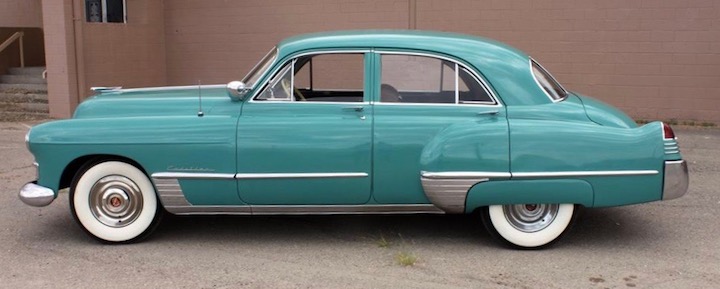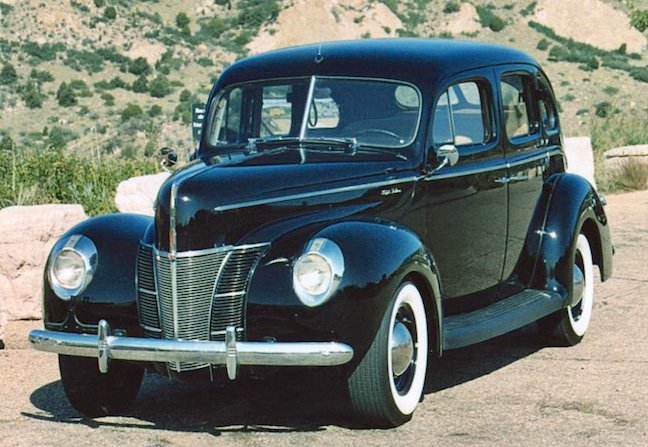Actually, that car was the first complete design, But the team's influence was seen earlier in the 1937-vintage facelifts of Opel's Kadett and Olympia models. Those cars were new to Opel's line in 1935-36, and featured a form of monocoque construction, a first for Opel. The bodies were essentially the same, with the Olympia having a wheelbase 33 mm (1.3 inches) longer than the Kadett. Visually, the main differences were in the grille and hood ventilation detailing.
The 1937 GM-inspired facelifts largely took the form of bold, American-style grilles, as can be seen below.
Two factory photos of the 1936 Opel Kadett.
Auction photos of a 1936 Opel Olympia (the name inspired by the 1936 Berlin Olympic games). The Olympia lacks the Kadett's strong vertical grille bar. Hood side-venting differs. There are minor sheet metal and trim differences in the C-pillar belt line area. The wheels also differ. But overall, the designs are almost entirely the same. Now for the facelifts ...
1938 vintage Opel Kadett 4-door Limousine.
A 1938 Chevrolet Master DeLuxe sedan, Barrett-Jackson auction photo. Note the similarities of the grille bars: GM's new German-based stylists had a strong sense of the design directions of the corporation's American brands when they left Detroit and must have exchanged styling information while they were in Rüsselsheim.
1938 Opel Olympia, image source unknown to me, but plentiful on the Web. Its grille is slightly larger and bolder than the Kadett's. Hood side vent ornamentation differs as does bits of sheet metal at the base of the C-pillar.
This Kadett image can be found here and there on the Internet. It differs from late '30s Kadetts and Olympias in that the trunk is smoothly integrated with the rest of the lower body. Also, the fenders have been reshaped. There was never a production version of this, so my best guess is that it was a styling proposal, perhaps intended for production in 1942 or thereabouts. Inform in comments if more about this car is known.























































